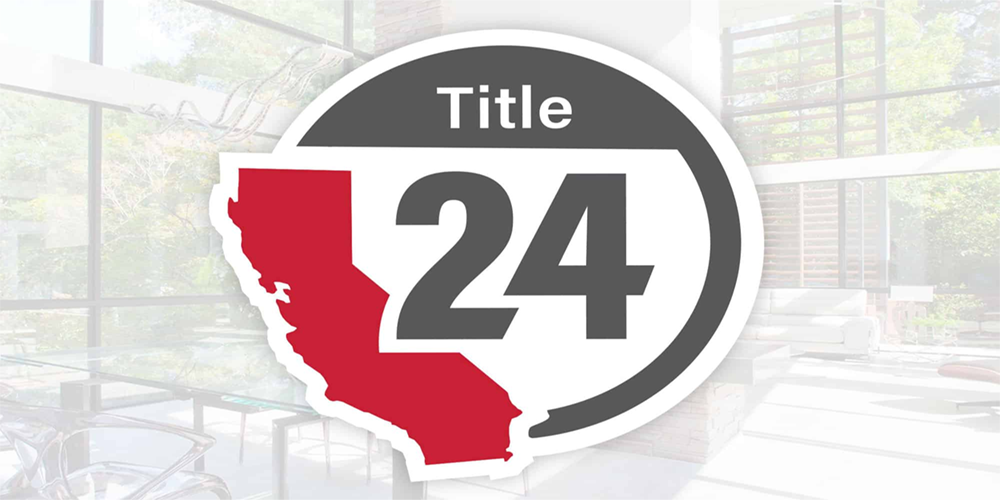
Title 24 is composed of 12 "Parts" described below.
PART 1 - CALIFORNIA ADMINISTRATIVE CODE
The California Administrative Code (CAC) contains administrative regulations of the California Building Standards Commission and administrative regulations of all State agencies that implement or enforce building standards.
PART 2 - CALIFORNIA BUILDING CODE
The California Building Code (CBC) contains general building design and construction requirements relating to fire and life safety, structural safety, and access compliance. CBC provisions provide minimum standards to safeguard life or limb, health, property and public welfare by regulating and controlling the design, construction, quality of materials, use and occupancy, location and maintenance of all buildings and structures and certain equipment. Part 2 is pre-assembled with the International Building Code (IBC) with necessary California amendments. This part is published in two volumes:
Volume 1 contains Chapters 1 through 15.
Volume 2 contains Chapters 16 through 35, and Appendices A through M.
Matrix Adoption tables are provided at beginning of every chapter in Part 2 to indicate what chapters and sections are adopted by state agencies (for application to their respective occupancies).
Since publication of Part 2 in 2 volumes was done as a convenience, Volume 2 now also contains Parts 8 and 10.
PART 3 - CALIFORNIA ELECTRICAL CODE
The California Electrical Code (CEC) contains electrical design and construction standards. Provisions contained in the CEC provide minimum standards to safeguard life or limb, health, property, and public welfare, and to protect against hazards that may arise from the use of electricity by regulating and controlling the design, construction, installation, quality of materials, location and operation of electrical equipment, wiring, and systems. This volume is pre-assembled with the National Electrical Code of the National Fire Protection Association (NFPA) with necessary California amendments.
PART 4 - CALIFORNIA MECHANICAL CODE
The California Mechanical Code (CMC) contains mechanical design and construction standards. Provisions contained in the CMC provide minimum standards to safeguard life or limb, health, property and public welfare by regulating and controlling the design, construction, installation, quality of materials, location, operation, and maintenance or use of heating, ventilating, cooling, refrigeration systems, incinerators and other miscellaneous heat-producing appliances. This code is pre-assembled with the Uniform Mechanical Code of the International Association of Plumbing and Mechanical Officials (IAPMO) with necessary California amendments.
PART 5 - CALIFORNIA PLUMBING CODE
The California Plumbing Code (CPC) contains plumbing design and construction standards. Provisions contained in the CPC provide minimum standards to safeguard life or limb, health, property and public welfare. It also protects against hazards that may arise from the use of plumbing piping and systems by regulating and controlling the design, construction, installation, quality of materials, location and operation of plumbing piping systems within the State of California. This code is pre-assembled with the Uniform Plumbing Code of the International Association of Plumbing and Mechanical Officials (IAPMO) with necessary California amendments.
PART 6 - CALIFORNIA ENERGY CODE
The California Energy Code contains energy conservation standards applicable to all residential and non-residential buildings throughout California, including schools and community colleges.
PART 8 - CALIFORNIA HISTORICAL BUILDING CODE
The California Historical Building Code (CHBC) contains regulations of the State Historical Building Safety Board. Provisions contained in the CHBC provide for the preservation, restoration, rehabilitation, relocation, or reconstruction of buildings or structures designated as qualified historical buildings or properties. The CHBC contains alternative solutions for the preservation of qualified historical buildings or properties, to provide access for persons with disabilities, to provide a cost effective approach to preservation, and to provide for the reasonable safety of the occupants or users.
PART 9 - CALIFORNIA FIRE CODE
The California Fire Code (CFC) contains regulations consistent with nationally recognized accepted practices for safeguarding, to a reasonable degree, life and property from the hazards of:
Fire and explosion
Hazardous conditions in the use or occupancy of buildings or premises
Dangerous conditions arising from the storage, handling and use of hazardous materials and devices
The CFC also contains provisions to assist emergency response personnel. These fire-safety-related building standards are referenced in other parts of Title 24. This code is pre-assembled with the International Fire Code with necessary California amendments.
PART 10 - CALIFORNIA EXISTING BUILDING CODE
The California Building Standards Commission (CBSC) adopts certain provisions of the International Existing Building Code, Appendix Chapter A1, Seismic Strengthening Provisions for Unreinforced Masonry Bearing Wall Buildings.
Part 11 - CALIFORNIA GREEN BUILDING STANDARDS (CALGreen Code)
The California Green Building Standards Code contains standards applicable to residential and non-residential buildings throughout California, including schools and community colleges.
Part 12 - CALIFORNIA REFERENCE STANDARD CODE
The California Referenced Standards Code (CRSC) contains minimum test and reference standards required by the California Building Standards Code.
Post time: May-27-2024
 +86-13376814803
+86-13376814803  robert@hzhongtai.com
robert@hzhongtai.com 











